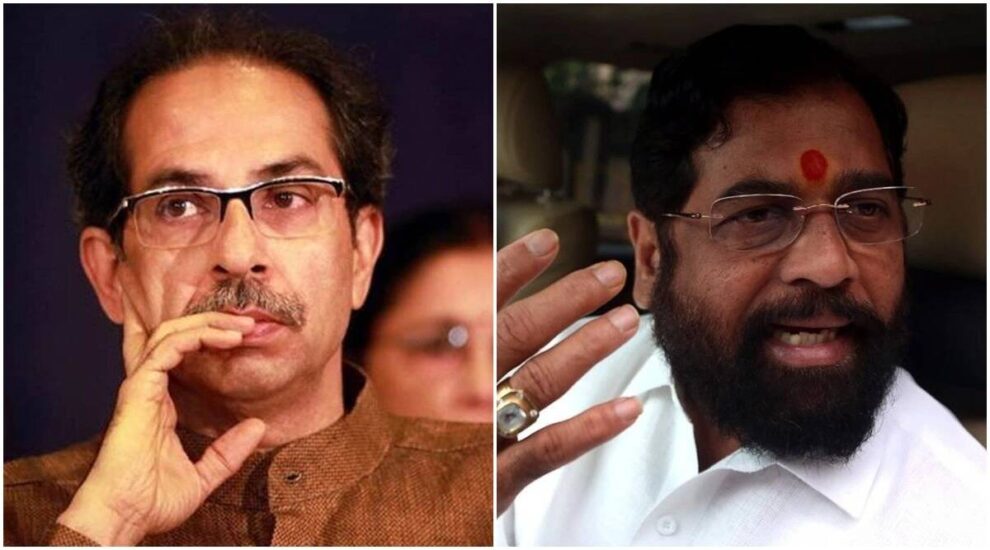The Supreme Court has closed the curtains on this thrilling theatrical production
In the course of the hearings in the Maharashtra political “crisis” matter before the Constitutional Bench of the Supreme Court of India, Chief Justice of India D Y Chandrachud asked the counsel for the Uddhav Thackeray Shiv Sena (UBT) a telling question: “So according to you we (the Court) do what? Reinstate? But you resigned.” Justice M R Shah took the CJI’s question forward: “How can the Court reinstate the chief minister who did not even face the floor test?”
It is at this juncture that the matter effectively reached its logical conclusion. It is hard to question this observation made by the justices as Thackeray’s ill-thought resignation ahead of the floor test called by the Governor of the state, rendered this matter purposeless even before Court hearings began. The Court has also recognised that Thackeray’s resignation resulted in a legal dead-end, as the material relief being claimed by the petitioners, was effectively a request to the Court to reinstate a resigned government. The Court has thus observed that it would be unable to restore the status quo ante because Thackeray did not take the floor test and tendered his resignation. Further, in a big blow to the UBT Sena, the Court has conclusively recognised that the action of the House in electing the Speaker, Rahul Narwekar, on July 3, 2022, is not illegal merely because some MLAs who participated in this process faced disqualification proceedings. Further, emphasising the Speaker’s pivotal role, the Court has held that the Speaker is in fact entitled to determine who the “real” Shiv Sena was and correspondingly decide who the famed bow and arrow symbol belongs to.
In the event that the Court had attempted to reinstate the status quo, or decide the legitimacy of the whip, as requested by the petitioners, it would have effectively placed itself in the shoes of the Speaker and bypassed its constitutional mandate. Such powers lie beyond the Court’s horizons. However, despite this loss of legal standing, naysayers are scurrying to clutch at straws in the quest to gain some moral high ground. This is despite the fact that every relief prayed for in the lead petition has been dismissed.
Further, the Court’s judgment has also ensured that the UBT Sena’s attempts to stall proceedings before the Election Commission of India (ECI) have fallen flat. The UBT Sena made several concerted attempts to malign the ECI. Thus, preventing a constitutionally-sanctioned body from deciding important matters such as who the official party name and symbol would be afforded to. The UBT Sena’s desperate endeavours of preserving the thinnest shreds that tie it to the “real” Shiv Sena have been unsuccessful. The Court’s ruling on this front is clear. It has, in plain words, held, “The ECI is empowered to adjudicate disputes between rival sections or groups of a recognised political party, each of whom claims to be that party, under Paragraph 15 of the Symbols Order. When such a dispute arises, the ECI will decide if one of the rival sections or groups is that recognised political party…”.
Taking a break from this political identity crisis, the Court’s judgment has clarified several constitutional principles. Importantly, it has referred the Supreme Court’s 2017 decision in Nabam Rebia and Bamang Felix v the Deputy Speaker and Others to a larger seven-judge Bench of the Court for further consideration. The Bench believes that Nabam Rebia as it stands, has left several key issues undecided. Notably, a majority of the petitioners’ case relied mainly on Nabam Rebia, an argument that the Court has wholly dismissed for, apart from being insufficient, being inapplicable to the matter at hand.
The Court’s observations in this matter are crystal clear; it has recognised the Governor’s actions as being lawfully acceptable whilst also astutely recognising Thackeray’s political blunders. Most interestingly, the judgment has silenced even compulsive contrarians.
However, the decision of the UBT Sena to pursue this matter even after Thackeray’s un-strategic resignation, has proved to be a fantastic academic exercise. Even though the judgment has visibly provided no real relief to the UBT Sena, desired or otherwise, it has given other sparring political parties a Supreme Court approved manual on the procedure to (lawfully) defect, disqualify and recognise political parties or their members. With its much-anticipated judgment today, the Supreme Court has thus put an end to the Shiv Sena row by unanimously holding that the Governor of Maharashtra was justified in inviting Eknath Shinde to form a government in the state with the support of the BJP.
Therefore, as we reach the climax of this political deadlock, it seems that the Supreme Court has closed the curtains on this thrilling theatrical production, Thackeray’s betrayal of the people’s mandate being the final act.
Source : The Indian Express
















